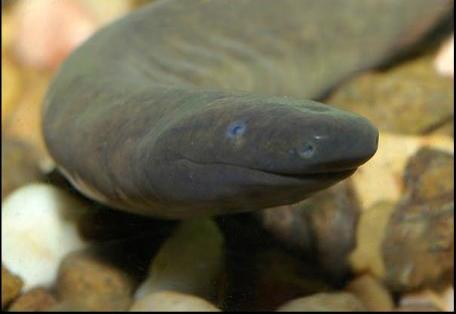


|
Typhlonectidae:
Typhlonectids are unique among caecilians in that they are secondarily aquatic. Members range from 140-750 mm total length. All 5 genera and 14 species in this family are viviparous and produce juveniles that shed their gills early on. Members may be completely aquatic or semi-aquatic; all make burrows either at water level or underwater. Fetuses feed intrauterinely throughout gestation. Typhlonectids possess tracheal lungs and narial plugs, secondary zygokrotaphic skulls, and lack annular scales as well as secondary annuli. A member of this family, Aretochoana eiselti, is known from only 2 specimens and is the largest extant lungless tetrapod (725 mm). This family is distributed in northern South America and has taxonomically been placed within Caeciliidae. The monophyly of this group is strongly supported through morphology, ecology, and geography. Caecilian authorities consider this family to be nested within Caeciliidae but the taxonomy is not resolved.
Genus : Atretochoana (1 species)
Chthonerpeton (8 species)
Nectocaecilia (1 species)
Potomotyphlus (1 species)
Typhlonectes (2 species)
|
